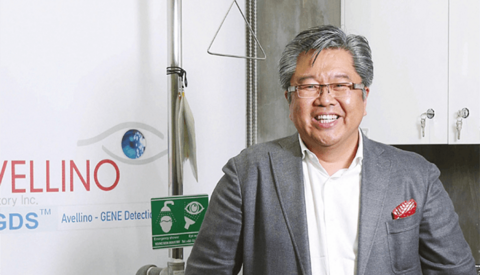The Power List 2019
The Ophthalmologist’s Power List 2019. This year saw a record number of nominations – almost 2,000 – across five categories: Champions for Change, Inventors, Emerging Leaders, Mentors, and Surgical Pioneers. Each nomination celebrates an individual who has made a significant impact on the field, whether that is through a philanthropic initiative or their ongoing commitment to innovation.
Inventors
Intelligent and inquisitive minds opening the door to the future of ophthalmology
Gene Lee
Chairman and CEO Avellino Labs

Prof. Tara Moore
Chief R&D Officer Avellino Labs

What place does innovation have within Avellino Labs?
Our company is a leader in genetic testing technology and gene therapy research, so innovation is the central driving force in what we do. The genetic field is still new for many ophthalmologists, so while it is only one of our specialties, we dedicate a significant amount of time and resources to educating new users, and working with ophthalmologists and researchers. We are continually looking for ways to expand the diseases we can detect within a single test, and then looking beyond those boundaries to develop new diagnostic applications. Since our inception we have rapidly expanded from being able to detect a single genetic mutation to being able to detect over 70 genetic mutations and assess risk factors across 75 genes – all in a single test! Being able to continually innovate in both the function and efficiency of a diagnostic tool is an enormous challenge, but it keeps us focused and energized every day.
What initiatives supporting innovation in eye care is the company involved in?
First and foremost, the first gene therapy for the anterior segment. We have partnered with the University of Ulster to research and develop the first personalized treatment for some truly debilitating corneal conditions. And we continue to invest in changing how we diagnose conditions through genetic sequencing. Our next generation diagnostic test will cause a massive shift in the diagnosis and treatment of keratoconus. There has been a long debate about the true source of changes in the cornea, and when to diagnose a patient. Our goal is to eliminate some of that mystery by providing genetic information doctors can use to screen, monitor, and treat patients that have certain genetic predispositions, instead of waiting for a patient to experience vision changes, and then relying solely on physical manifestations that the doctors can see with the slit lamp, OCT and topography.
How will ophthalmology change in the next 10 years?
Today we are just scratching the surface of what will become the standard of care – truly personalized medicine based on our unique genes. We will identify diseases in their early stages, and make it possible to alter patients’ lifestyles or habits to reduce or eliminate the progression and impact of disease. As this happens, patients will be able to avoid some or all of the cost and hardships associated with eye diseases. The healthcare systems – providers and insurers – will also be able to shift from spending time and money on treating patients’ symptoms to more preventative methods and monitoring to ensure disease progression is kept in check, or treated at its earliest stages.